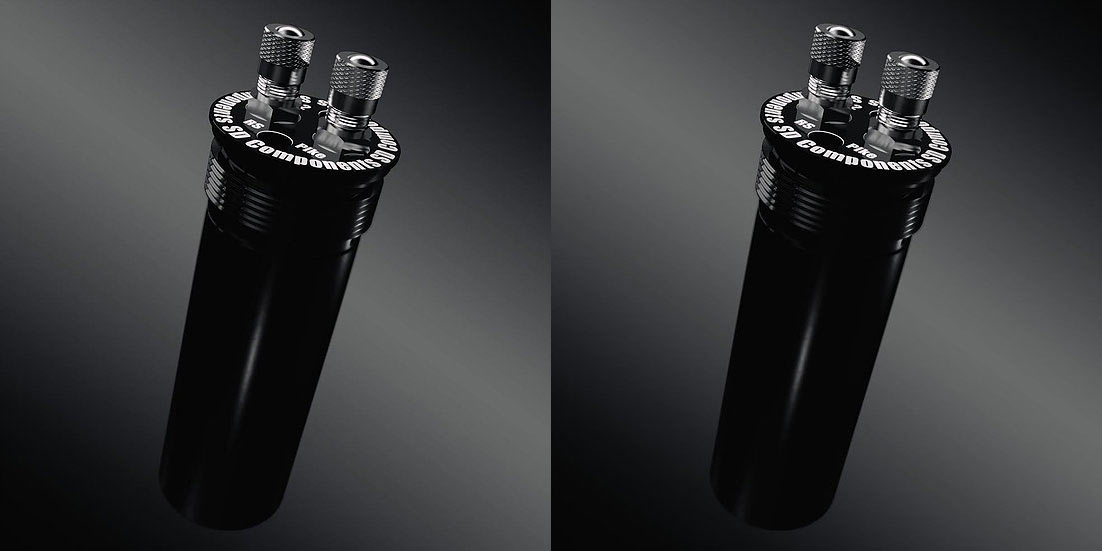Based in Australia, SD Components makes fork upgrade kits for the Fox 36 and Rockshox Pike, Lyrik and Boxxer mountain bike suspension forks. The main item is their Dynamic Volume Chamber, which gives you two separately adjustable air chambers. This creates a dual system that works together to provide both end-of-stroke support and small bump sensitivity at the beginning of travel…which is the holy grail we all seek.
There’s two camps forming when it comes to the best way to adjust your fork’s sensitivity and overall tune. One the one hand, Fox and Rockshox offer volume spacers that let you tweak the overall volume, then adjust air pressure to suit your weight and riding style. More spacers can provide more ramp at the end to prevent bottom out, but end up requiring higher air pressure to support the rider, which decreases small bump suppleness. Read this tech post to see how that works and how to adjust your own fork.
The other camp is being formed by MRP and, now, SD Components. MRP launched their Ramp Control Cartridges at Eurobike 2016, and they work by proving a dynamic air volume adjustment through porting that closes off the upper half of the air chamber on a big hit to control ramp and prevent bottom out. We posted a deep dive on that tech here.
SD Components takes a different approach by creating two completely sealed air chambers, each with it’s own air pressure setting (similar to the new Formula Nero R DH fork’s triple air design). Designed for modern “solo air” forks that self adjust pressure between the positive and negative chambers, the Dynamic Volume Chamber simply threads into the top of the air chamber of either brand’s fork. It replaces the standard air cap and volume spacer system with a secondary, higher pressure chamber.
At full extension, you set the main chamber at a lower pressure to improve small bump sensitivity and mid-stroke performance. The upper (new, secondary) positive air chamber is set at a higher pressure, and has a floating piston separating the two chambers. As the fork compresses, air pressure in the main chamber will rise to match the secondary chamber. At this point, both chambers compress in sync:
Because the main chamber is larger and set at a lower starting pressure, it can react more quickly to small hits and subtle trail fluctuations. The smaller, high pressure chamber doesn’t move until system pressure is equalized between them, which then controls the end of stroke movement and ramp. And either chamber can be used either way – increase the main chamber pressure to increase beginning and mid stroke support, or increase secondary chamber to make it more progressive. The key is that it offers a lot of flexibility in fine tuning your fork’s performance to match your needs. Retail is AU$260, check their website for all compatible models.



